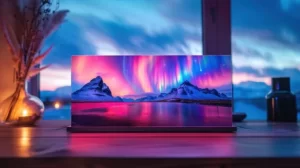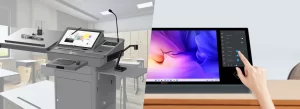This blog is going to be an informative journey, so let us dive straight into the matter without wasting your time with a long-winded introduction.
Let’s get started with some basics.
Ps- you can skip whatever you already know and go straight to the part that helps you identify the best digital signage players. Click on the relevant section in the table of content below.
Table Of Contents
What is a digital signage player?
A digital signage player is a specialized device that retrieves content from the signage software and renders it on electronic screens, managing playback, format, and resolution to ensure optimal presentation.
Precisely, it takes information from the screen content management software and acts on that information so that the contents play out on the screen perfectly in terms of aspect ratio, resolution, audio/video synchronization, video playback speed, and so on.
How does a digital signage media player work?
Before explaining how a digital signage player works, it is essential to know why screens need a media player in the first place.
A digital signage player is like a computer with a software operating system. Just like your PC, it can:
- Internet connectivity:
It connects to the internet to access and download content.
- Content management:
The player can download, store, and to some extent, modify the content based on requirements.
- Scheduled playback:
It plays content at predetermined times, ensuring timely information display or advertisements.
Can your screen alone do that?
The answer is ‘No.’
A screen or display is a piece of hardware, an interface that will show you whatever is pushed into it by the media player. It has no brain of its own. It has no power to communicate with the internet.
Unlike a simple screen or display, which only shows content fed into it, a digital signage player actively manages and communicates this content. It’s the ‘brain’ behind the display, interpreting and presenting the data from the digital signage software.
Modern smart TVs, with built-in media players, can connect to the internet and perform similar functions. This integration represents an evolution from the earlier need for external media players to handle web-based content. Over time, these players have become more compact and efficient, leading to the development of today’s smart screens.
Understanding the player’s role is crucial. For instance, consider displaying a video advertisement on a retail store’s digital screen. The process involves






